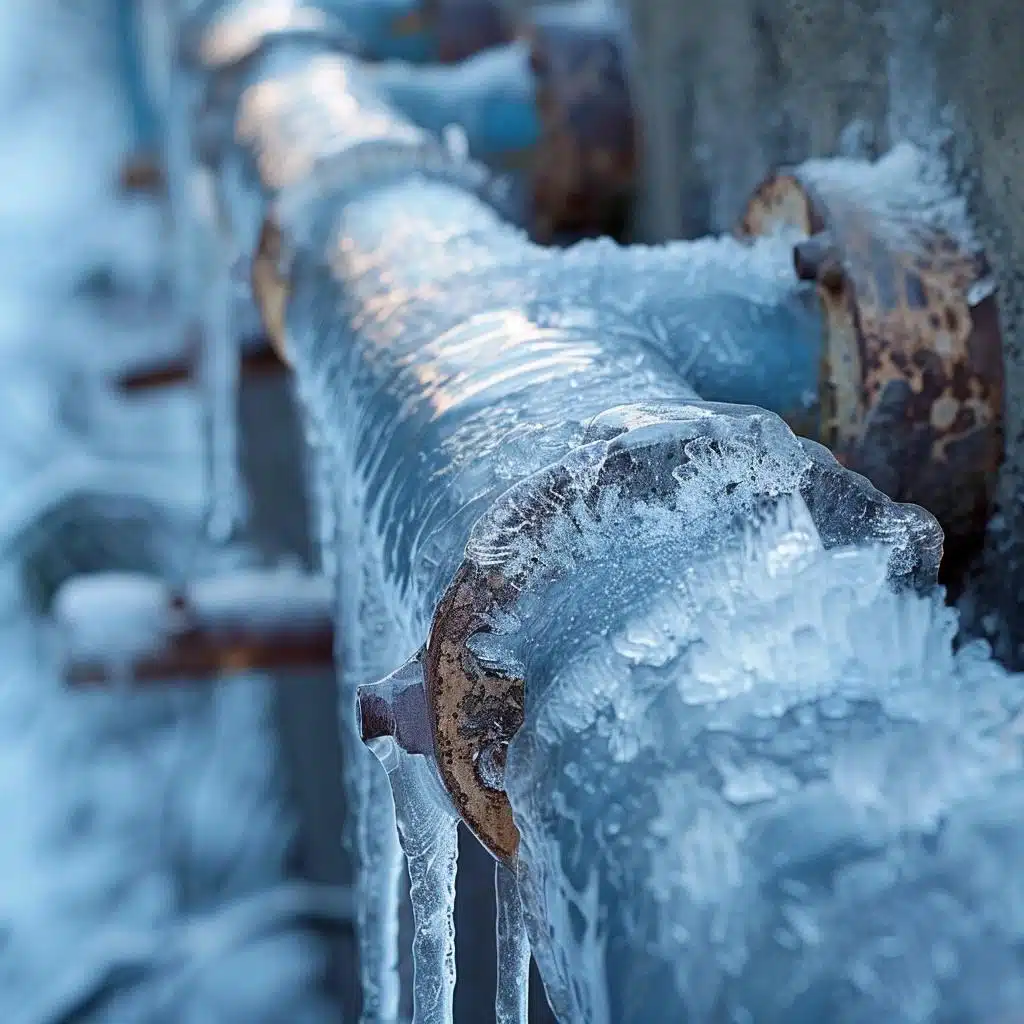Protecting Your Pipes from Freezing Damage: Key Tips
Protecting Your Pipes from Freezing Damage: Key Tips
Blog Article
What're your opinions on Winter Plumbing Precautions: Preventing Frozen Pipes?

Cold weather can damage your pipes, specifically by freezing pipelines. Here's exactly how to stop it from taking place and what to do if it does.
Introduction
As temperature levels decrease, the danger of icy pipes boosts, potentially leading to pricey fixings and water damage. Comprehending exactly how to stop icy pipelines is vital for home owners in chilly climates.
Prevention Tips
Insulating susceptible pipes
Cover pipes in insulation sleeves or make use of warm tape to secure them from freezing temperature levels. Concentrate on pipelines in unheated or exterior locations of the home.
Home heating methods
Maintain interior rooms appropriately heated up, specifically locations with plumbing. Open closet doors to permit warm air to distribute around pipes under sinks.
Just how to determine icy pipes
Try to find decreased water flow from taps, uncommon odors or sounds from pipes, and visible frost on revealed pipes.
Long-Term Solutions
Structural changes
Consider rerouting pipes far from outside walls or unheated locations. Add extra insulation to attics, cellars, and crawl spaces.
Upgrading insulation
Buy top quality insulation for pipelines, attic rooms, and walls. Proper insulation assists preserve consistent temperature levels and lowers the danger of frozen pipes.
Shielding Outside Plumbing
Yard hoses and outside taps
Disconnect and drain yard tubes before winter. Mount frost-proof faucets or cover outside faucets with shielded caps.
Comprehending Frozen Pipelines
What triggers pipes to ice up?
Pipes freeze when exposed to temperatures listed below 32 ° F (0 ° C) for extended durations. As water inside the pipes ices up, it broadens, putting pressure on the pipe walls and potentially creating them to burst.
Dangers and damages
Icy pipes can lead to water supply disturbances, residential or commercial property damages, and costly repairs. Ruptured pipelines can flood homes and trigger comprehensive structural damages.
Indications of Frozen Pipes
Determining frozen pipelines early can stop them from breaking.
What to Do If Your Pipes Freeze
Immediate actions to take
If you believe icy pipelines, maintain faucets open to ease pressure as the ice thaws. Make use of a hairdryer or towels soaked in hot water to thaw pipelines slowly.
Conclusion
Preventing icy pipelines requires aggressive procedures and quick feedbacks. By comprehending the causes, indications, and preventive measures, home owners can safeguard their pipes during cold weather.
6 Proven Ways to Prevent Frozen Pipes and Protect Your Home
Disconnect and Drain Garden Hoses
Before winter arrives, start by disconnecting your garden hoses and draining any remaining water. Close the shut-off valves that supply outdoor hose bibs and leave the outdoor faucet open to allow any residual water to drain. For extra protection, consider using faucet covers throughout the colder months. It’s also important to drain water from any sprinkler supply lines following the manufacturer’s directions.
Insulate Exposed Pipes
Insulating your pipes is an effective way to prevent freezing. Pipe insulation is readily available at home improvement stores and is relatively inexpensive. Pay close attention to pipes in unheated areas such as the attic, basement, crawl spaces, or garage. Apply foam insulation generously to create a buffer against the cold. You can also wrap your pipes in heat tape or thermostat-controlled heat cables for added warmth.
Seal Air Leaks
Inspect your home for any cracks or openings that could let in cold air. Seal any holes around the piping in interior or exterior walls, as well as the sill plates where your home rests on its foundation. Additionally, make sure to keep your garage door closed unless you’re entering or exiting. Leaving it open creates a significant air leak that can lead to frozen pipes.
Allow Warm Air Circulation
During cold snaps, it’s essential to allow warm air to circulate evenly throughout your home. Leave interior doors ajar to promote better airflow. Open kitchen and bathroom cabinets to help distribute heat consistently around the rooms. If you have small children or pets, be sure to remove any household chemicals or potentially harmful cleaners from open cabinets for safety.
Let Faucets Drip
A small trickle of water can make a big difference in preventing ice formation inside your pipes. When temperatures drop significantly, start a drip of water from all faucets served by exposed pipes. This continuous flow helps prevent the water from freezing. Additionally, running a few faucets slightly can relieve pressure inside the pipes, reducing the chances of a rupture if the water inside does freeze.
https://choateshvac.com/6-proven-ways-to-prevent-frozen-pipes-and-protect-your-home/

I came across that blog entry on Helpful Tips to Prevent Frozen Pipes this Winter when doing a search on the web. If you appreciated our blog post please be sure to pass it around. I treasure reading our article about 6 Ways to Prevent Frozen Pipes.
Get Started Report this page